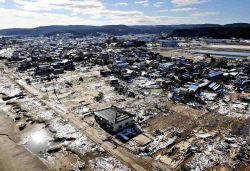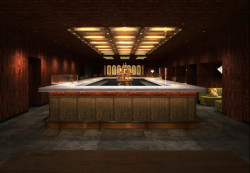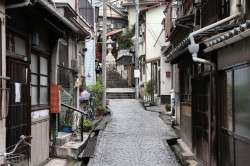
Originally published on metropolis.co.jp on July 2012

Yukio Mishima, that perennially gloomy writer, once wrote that he never felt more alive than on the hot festival day in 1956 when he joined a band of merchants in carrying a mikoshi through the streets.
A mikoshi is a portable (if seriously heavy) wooden shrine paraded around the neighborhood at religious festivals by the local men, who sway it from side to side as they shout rhythmically to keep in step. Carried by means of wooden poles attached to the base, the mikoshi serves to transport animist deities from one permanent shrine to another. It appears always on the verge of toppling over, and the physical exertion required to keep it upright is great—and naturally appealed to Mishima, who by this stage in his life was a manic bodybuilder.
In an ecstatic essay titled “On Intoxication” he writes of the joy of carrying the shrine under a “divine blue sky,” and feeling that he was “drowning in life.”
Unlike Mishima, I don’t depend on physical exertion to affirm my own sense of existence; but after I had the chance to carry a mikoshi in Tohoku last November, I found myself agreeing with him. I was nervous beforehand, but once we’d hoisted the shrine onto our shoulders we were carried away by the sheer momentum of the parade. A man with a loudspeaker led our chorus of, “Oisa, sorya! Oisa, sorya!,” as he guided us along a seemingly random route through the festival site. All around stood spectators, each one a survivor of the March 11 disasters, smiling and filming and clapping and chanting along. My throat sore, my shoulder in agony, my knees bent to accommodate the lower height of my Japanese companions, I was having the time of my life.
I’m into neither sports nor religion, but it’s the combination of the two that makes mikoshi-carrying such a thrill. The idea that you’re pouring all your energy back into nature, as symbolized by the deity that’s lurking invisibly somewhere above your right shoulder, is a great motivator—whether you believe in the god’s existence or not (and I’m sure most Japanese people don’t). I felt this energy again a few months ago at the Kanamara festival of fertility in Kawasaki, which has been repackaged and marketed to foreigners as one of Japan’s “penis festivals.” Serving as a simple symbol of fertility, a giant penis statue is placed inside the mikoshi and paraded around the area with much fanfare. I was standing right behind the shrine as the men prepared to carry it. The next thing I knew, they’d heaved it up, and with an “oisa, sorya!” they were off, as a forest of locals and giggling tourists pressed in on me from all sides in a mad rush to see the shrine from up close. Stuck between a cock and a hard place, I ended up tailing the mikoshi for the entire hour-long procession. I was once again being swept up by that intoxicating momentum.
The mikoshi parade is all the more important when you consider how dull Japanese street festivals can be otherwise. Originally intended as joyful celebrations in honor of Japan’s countless spirits, which doubled up as an excuse for the local community to indulge in popular sports, dance and music, today they seem to exist for the tourists, or just out of inertia (the Japanese will happily tear down any building that’s been standing for more than ten years, but they place great value on the continuity of institutions. Just look at their millennia-old imperial dynasty). All the traditional dancers and musicians will be duly trotted out, but outside the mikoshi parade the whole enterprise lacks energy and enthusiasm. People attend as spectators, not participants. No one really celebrates. Even the major festivals are afflicted with a certain listlessness: tourists come, buy ice cream, watch the performances then leave when they’re finished. The Aoi Festival in Kyoto—one of the biggest in Japan—had about as much festival spirit as Buckingham Palace’s Changing of the Guards.
I confess that I’ve only been to one Japanese festival outside the big cities—the one where I carried the mikoshi, which took place in what was left of a village in Ishinomaki that had been swept away by the tsunami. It was being held to gather the survivors and signal the start of the reconstruction effort. If one of the main purposes of street festivals is to bring neighbors together and strengthen community ties, perhaps they’ve lost their meaning in cities like Tokyo and Osaka, where the very fabric of local communities is unraveling. Does the future of the local festival belong to rural Japan?
Have something to say about this story? Share your comments below.







